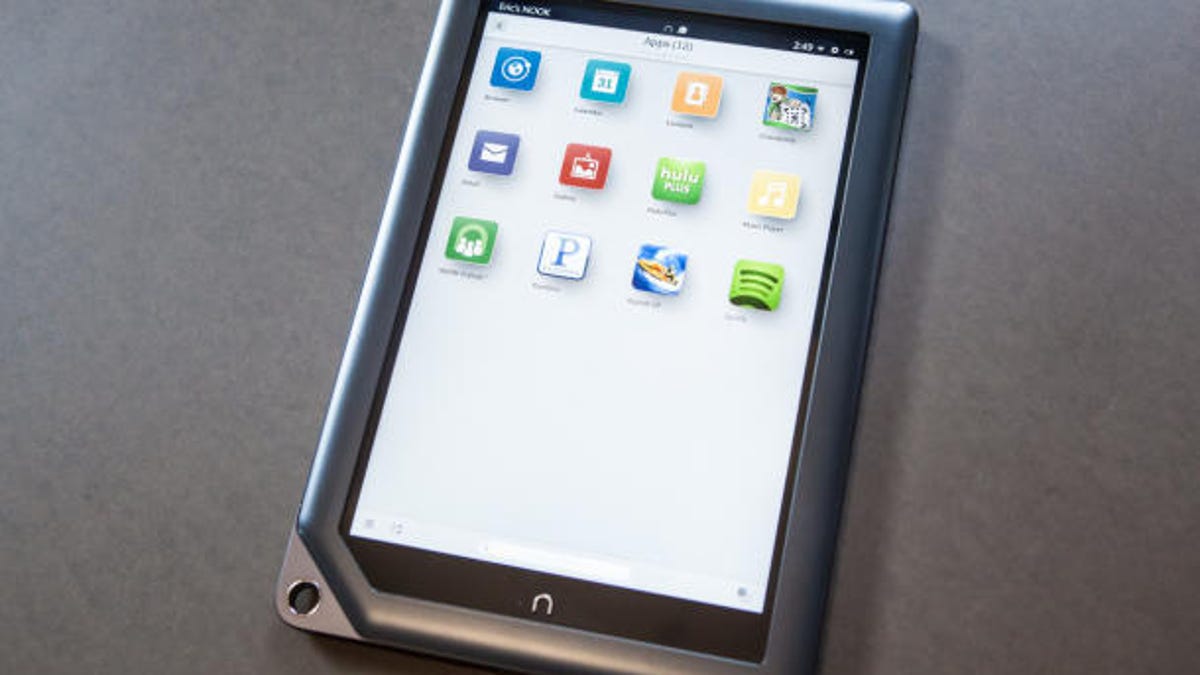Barnes & Noble backpedals on dropping color tablets
The bookseller will continue to design and make Nook color devices, with at least one new Nook set for the holiday season, as its chairman shelves a bid to buy the retail side.

Barnes & Noble will keep making the breadth of its Nook devices after all, in a reversal of strategy set by a chief executive who departed last month.
Michael P. Huseby, president of Barnes & Noble and chief executive of its Nook Media unit, said the company "intends to continue to design and develop cutting-edge Nook black and white and color devices," which includes offering Nook HD, Nook HD+ and its other e-readers "at the best values in the marketplace." At least one new Nook will be released for the holidays and more products are being developed, he added.
Meanwhile, Nook division sales sank 20 percent in the latest period, while its adjusted losses narrowed slightly to $55 million.
"Our top priority in our operating strategy is to increase all categories of our content revenue. We are working on innovative ways to sell content to our existing customers and are exploring new markets we can serve successfully," Huseby said in a statement accompanying the report.
In June, Barnes & Noble said it would jettison its business making tablets like its Nook HD and Nook HD+, followed shortly thereafter by the news that CEO William Lynch would resign. That marked the departure of a tech-focused executive who rose to the company's helm from its online business, and put more authority in the hands of Leonard Riggio, Barnes & Noble's chairman and biggest shareholder.
Tuesday, Riggio said he was suspending his effort to buy the retail side of Barnes & Noble. "It is in the company's best interests to focus on the business at hand. Right now, our priority should be to serve the more than 10 million customers who own Nook devices, to concentrate on building our retail business and to accelerate the sale of Nook products," he said in a filing. He noted he reserved the right to resume the bid, which would have left Barnes & Noble's Nook Media, a unit that also includes its college bookstores, as the remaining company.
Shares were down 15 percent at $14.14 in premarket trade on the news that such a deal wasn't in the offing. The company had said in February that Riggio was considering a possible offer for the retail chain but hadn't provided further details since then.
Barnes & Noble has kept its cards close to the vest since Lynch's resignation as well. At the time, the company said it wasn't searching for a CEO successor, and would instead review its strategy and "update when appropriate." Since then, the only peeps out of Barnes & Noble about the division have been announcements about a suite of video apps that play movies and TV shows purchased in the Nook store on iOS, Android and Roku devices Monday and more discounts to its devices such as Sunday's $20 price cut to the Nook Simple Touch with GlowLight, the second reduction since September.
Tuesday, Barnes & Noble reported its loss widened in the fiscal first quarter, ended July 27, as overall sales fell 8.5 percent, slightly more than expected, to $1.33 billion. Its loss of $87 million, or $1.56 a share, compared with a year-earlier loss of $39.8 million, or 76 cents a share.

